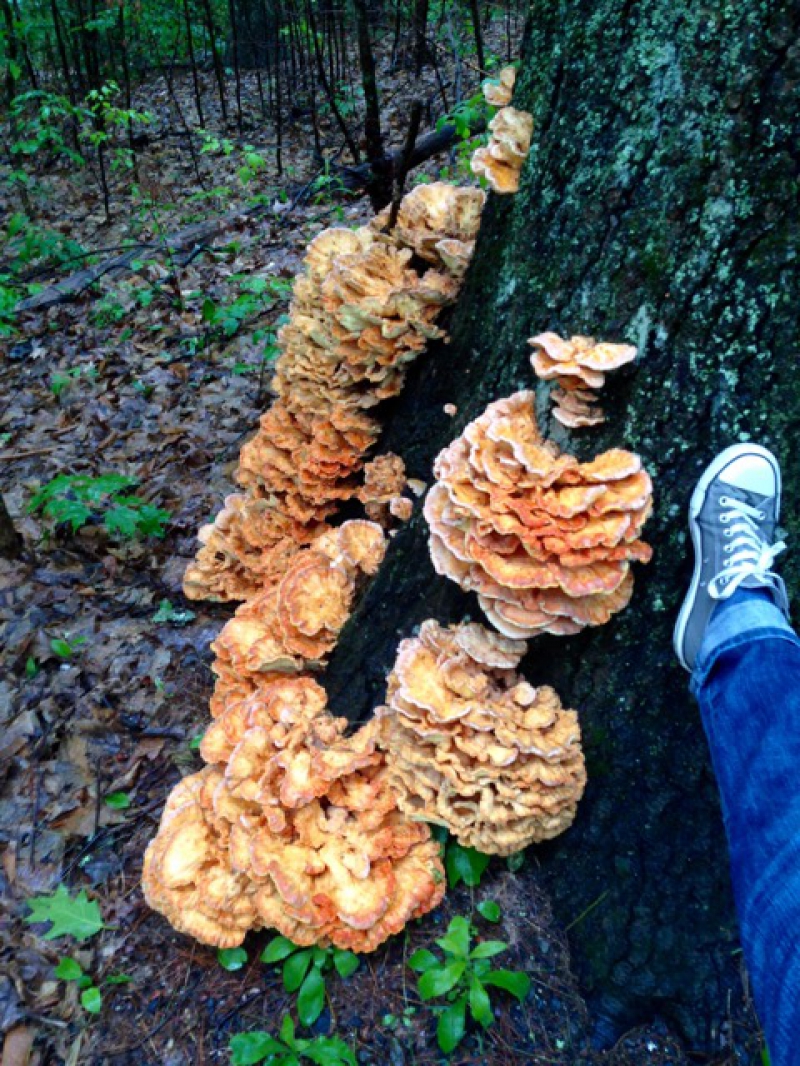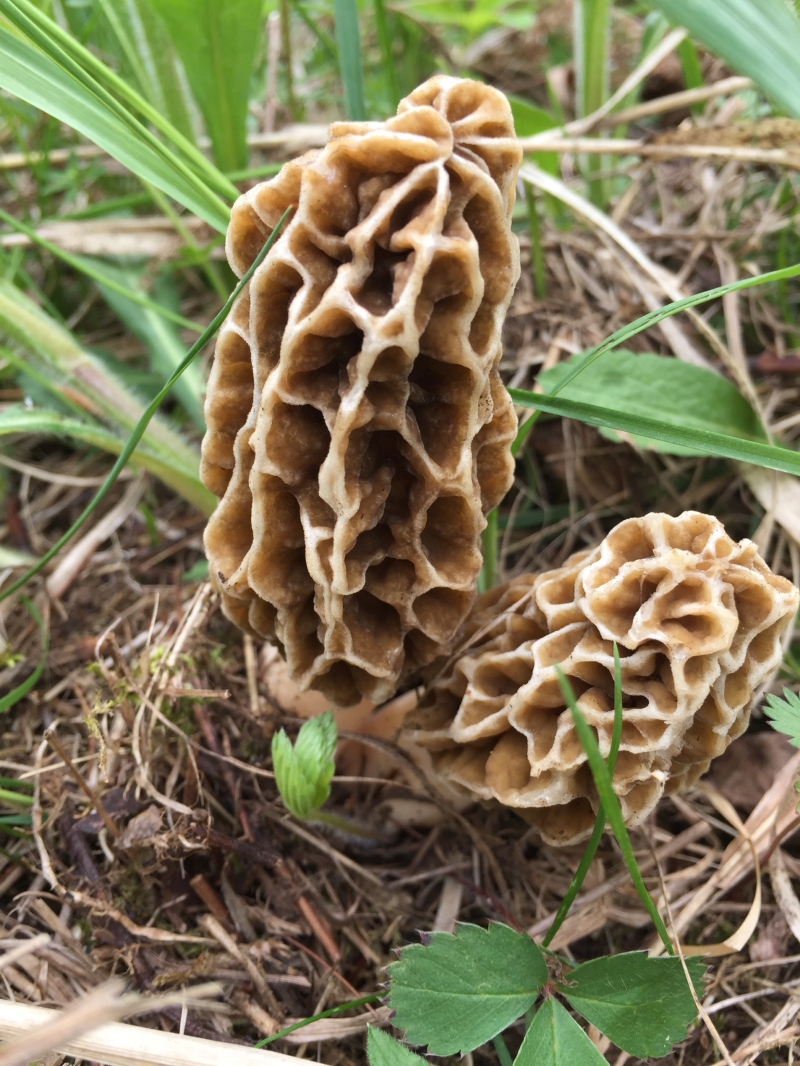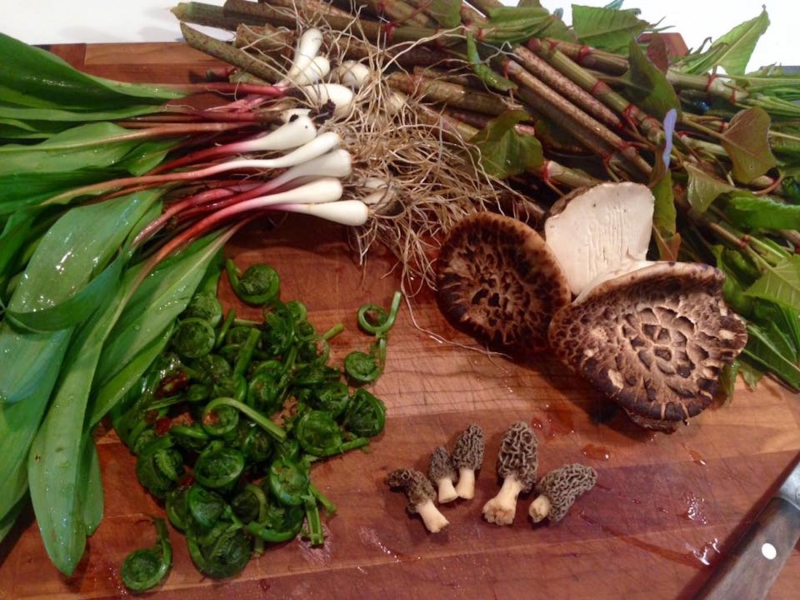By Laurie Merrigan
As the canopy of leaves darkens and grows, so grows the abundance of what we can harvest just outside our door.
There are tasty early leaves of dandelion greens (Taraxacum officinale) and wood sorrel (oxalis).
If you have gloves you can take home versatile stinging nettles (Ursa diotica). Cook this spinach substitute well to denature the nasty sting. Nettles are abundant, rich in nutrients, make a good cleansing tea, and can help with seasonal allergies. Look for them in fields and along sunny forest edges.
You might find nettles’ native cousin, Laportea canadensis, deeper into the woods along streams and floodplains. This is prickly too, so take care — but don’t let that keep you from its deliciousness.
As you stroll deeper into some local woods, look for late fiddleheads, the unfurled fronds of ostrich ferns, or Matteuccia struthiopteris. You won’t be sorry. Pass them up if they’ve opened and sprouted up. It’s the tiny, flavorful buds with the U-shaped stems near the ground that you want. Their flecks of brown papery chafe will fall off when soaked.
(These are easier to find and identify later in the season. Note that for next year’s early spring forays.)
Try also to find wild leeks — Allium tricoccum — called ramps. These pop up in early spring but you can find them into summer in deeper, colder spots.
With wide, dark green leaves, they usually grow in a large patch. A ripped leaf of ramp releases a strong appealingly garlicky smell. If you have a good nose you’ll be able to tell these from the similarly leaved ornamental, not at all edible, lily of the valley.
Whenever I’m in the woods after the earth begins warming, I’m on the lookout. I peek on stumps, beneath leaves, and around and up into trees for this mycological bounty.
Treasured morels (morchella) come early in the season. Elusive and delicious, they like failing elms, old apples and big ash trees. Morels’ fickleness only adds to their excitement: I’ve also found them in a friend’s front yard under an oak.
Just as easy to find and identify is the dryad’s saddle mushroom, a.k.a. pheasant back (Polyporus squamosus). These polypores are decomposers that grow, shelf-like, off of wood instead of up from the soil. They pop out plentifully on stumps and downed or older trees: often maples, elms, and cottonwood. These are mild — perhaps not a standout edible — but an attractive and satisfying early season basket filler. I like them young for sautéing with garlic and braising with meat. The older, larger ones are likened to chewing on a steel-belted radial tire, so keep that in mind — and harvest the smaller specimens (and with a sharp knife).
A fun polypore to look for with its bright-sulphur yellow, orange, and cinnabar-red coloring, is the chicken of the woods, Laetiporus sulphureus, found on dead and dying hardwoods. A good edible, the entire “chicken” is a large cluster of soft, fleshy caps that are roughly fan shaped. I have found these mushrooms early June through October.
Remember: We are not the only ones who find these delicious. Sometimes you must give back to the forest if your pick is busy with shiny little black beetles.
As the deeper woods warm up I start to look for the little golden buttons of chanterelles peeking up though piney dappled shade. A popular culinary delight, these can be plentiful in our woods and in hardwood forests, growing on the ground (not on wood). What look like gills are actually ridges on the underside of the same colored cap that runs down the ringless stem.
Fresh chanterelles can have a fruity apricot smell and are delicious. Search them out. I’ve found these late into August.
A loud reminder here to never ingest anything you find in the woods without first confirming its absolute identity.
A favorite known to most as a grocery store find, the humble oyster mushroom grows commonly here from spring to fall. These grow on wood, often in overlapping shelves or clusters. Named for the shape of its younger, smaller specimen, it has a smooth and greasy white to brown surface. A great edible, these work well sautéed with a bit of butter or olive oil, and lend themselves well to slicing and drying.
Another favorite you might see sold as dried — but that I beseech you to try fresh — is black trumpet, Craterellus cornucopioides. It’s a less-appealing-looking fungus to be sure, but it’s also incredibly flavorful.
Black trumpets are smooth, black vase- or funnel-shaped terrestrial mushrooms. These are difficult to spot as they peek up through leaf litter and moss. Their flesh is brittle and tender. Inspired by their intense, earthy flavor, I once tried them baked into scones. They did not disappoint.
As summer matures, take a break from looking down and search up on the smooth grey bark of beeches for bright white-toothed lion’s mane or bear’s-head tooth fungus (Hericium americanum). Not limited to hardwoods, it’s an exciting and easier mushroom to spot.
According to mycologist David Fischer, “If it looks like a cluster of white fungal icicles hanging off a decaying log, stump or dead (or dying) tree, and it seems very fresh, bake it (or fry it slowly in a mix of butter and oil) and enjoy!”
I’ll leave you with the most romantic mushroom I know: hen of the woods, or Grifola frondosa. I find hen can be confused with chicken, so I tend to use the Japanese name: maitake. It appears on hardwoods, mainly very old oaks in late summer and fall. With dense clusters that can get quite large growing near or at the base, the caps are grayish to smoky brown. It’s an edible masterpiece. Searching for these takes over my thoughts and my days, causing me to detour, arrive late everywhere, and wander deeper into the woods. I’ve learned to bring a headlamp to find my way out.
I was once successfully wooed by a beautiful maitake offering left on my porch. Better than roses, better than wine, and better even than diamonds, a gift like that, I felt, must surely mean the giver understood the magic of the forest and must, like me, be happiest there with the ephemeral beauty of fleeting — and edible — treasures.
Laurie Merrigan lives in Newfane, Vermont. A former chef and restaurant owner, she is a master gardener who spends her days writing, gardening for a few special clients, and wandering the woods in search of treasure — mycorrhizal and otherwise.
























































